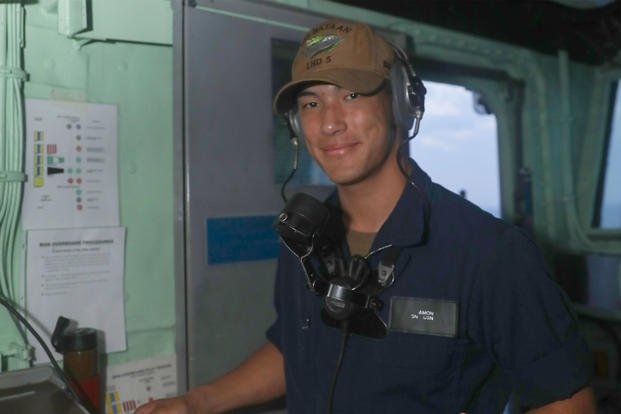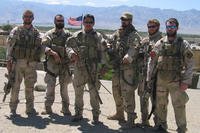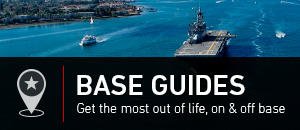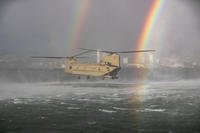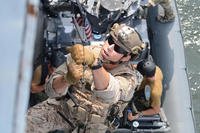Enlisted Navy ranks are a little different than the other U.S. military services.
Unlike the other U.S. military services, which organize service members according to ranks, the Navy organizes its force according to rates, although it also follows the same E-1 to E-9 pay-grade structures as the other services.
Enlisted Navy rates encompass various ranks categorized into apprenticeships (E-1 to E-3), petty officers (E-4 to E-6), and chief petty officers (E-7 to E-9). Apprenticeships comprise entry-level positions, including Seaman Recruit, Apprentice, and Seaman, often referred to as non-rated personnel.
Petty Officers are intermediate ranks specializing in specific job roles. Chief Petty Officers represent senior enlisted leaders, embodying extensive experience and expertise in their fields. They serve as mentors, supervisors, and technical authorities within their units.
The rate of enlisted sailors can be determined by their rating badge, which is a combination of a rate (pay-grade) badge of stripes or chevrons, depending on rank. It also can be determined by rating (occupational specialty), represented by the symbol just above the stripes or chevrons on the left sleeve of most uniforms.
Related: If you're interested in joining the military, contact a recruiter today.
Enlisted navy rates are broken down into three levels: Apprenticeships (E-1 through E-3), petty officers (E-4 through E-6) and chief petty officers (E-7 through E-9).
- Apprentice Ranks (E-1 through E-3)
- Petty Officer Ranks (E-4 through E-6)
- Chief Petty Officer Ranks (E-7 through E-9)
- Master Chief Petty Officer of the U.S. Navy (MCPON)
Enlisted Navy Rates: Apprentices (E-1 through E-3)
The enlisted pay grades E-1 through E-3 in the Navy re commonly are referred to as apprenticeships. Each apprenticeship is designated to indicate eligibility for entry into various ratings. General apprenticeship designators include:
- Airman -- Aviation Ratings
- E-2 -- Airman Apprentice (AA)
- E-3 -- Airman (AN)
- Fireman -- Naval Engineering Ratings
- E-2 -- Fireman Apprentice (FA)
- E-3 -- Fireman (FN)
- Seaman -- Deck and Administrative Ratings
- E-2 -- Seaman Apprentice (SA)
- E-3 -- Seaman (SN)
- Dentalman -- Dental Ratings
- E-2 -- Dentalman Apprentice (DA)
- E-3 -- Dentalman (DN)
- Hospitalman -- Health Care Ratings
- E-2 -- Hospitalman Apprentice (HA)
- E-3 -- Hospitalman (HN)
Navy apprenticeships are your first steps in becoming an integral part of the Navy. As an apprentice, your job will be to apply the skills and knowledge you learned in basic training, begin training for your future career in the Navy, and continue developing your followership skills. You will be expected to follow all orders and tasking given by your superiors.
Seaman Recruit (E-1)
Seaman recruit (SR) is the lowest enlisted rank in the Navy, just below seaman apprentice. Two separate pay grades exist within this rank -- one for those with service of less than four months, with a higher pay scale for those in service for more than four months, even if they have not yet advanced to seaman apprentice. Navy seaman recruits currently do not bear any uniform rank insignia.
Moving up in Rate: The Navy automatically will advance you to E-2 when you have completed six months of time in service (TIS), assuming you stay out of trouble and your performance remains satisfactory.
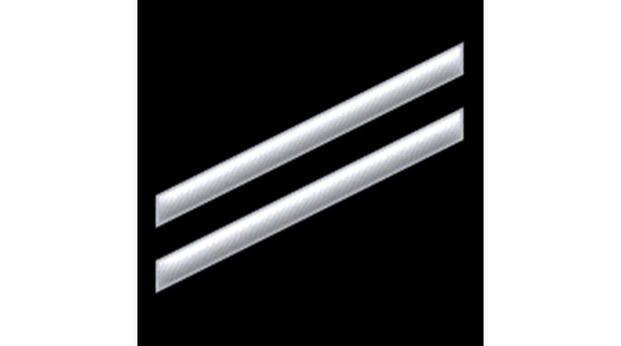
Seaman Apprentice (E-2)
The actual title for an E-2 in the Navy varies, based on the community to which the sailor belongs.
- Those in the general deck and administrative community are seamen apprentice. They wear white stripes on navy blue uniforms (see image below), and navy blue (black) stripes on white uniforms.
- Hospital corpsmen are hospitalmen apprentice. They are the only rate in this community. They wear white stripes on navy blue uniforms, and navy blue stripes on white uniforms.
- Those in the engineering and hull community are called firemen apprentice and wear red stripes on both navy blue and white uniforms.
- Those in the aviation community are called airmen apprentice and wear green stripes on both navy blue and white uniforms.
- Seabees are called constructionmen apprentice and wear light blue stripes on both navy blue and white uniforms.
Apprenticeships are your first steps in becoming an integral part of the Navy. As an apprentice, your job will be to apply the skills and knowledge you learned in basic training, begin training for your future career in the Navy and continue developing your followership skills. You will be expected to follow all orders and tasks given by your superiors.
Moving up in Rate: The Navy automatically will advance you to E-2 when they have completed six months' time in service (TIS), assuming you stay out of trouble and your performance remains satisfactory.
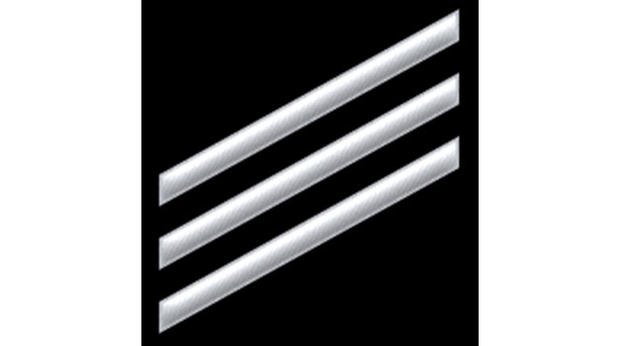
Seaman (E-3)
As with apprentice seamen (E-2), the actual title for an E-3 in the Navy depends on the subset of the Navy to which the sailor, seaman, submariner, aviator, hospitalman, nurse, etc., has been assigned. Likewise, the color of his/her group rate mark also depends on the section of the Navy.
The duties performed by seamen include ship maintenance; equipment maintenance, repair and storage for underway operations; lookout and helmsmen duties; serving as a member of damage control, emergency and security alert teams; participating in naval ceremonies; and working with qualified personnel to gain job training and experience.
Moving up in Rate: Like advancement to E-2, advancement to E-3 is virtually automatic. However, some units may require you to complete certain professional qualifications or apprenticeship exams before being declared eligible. In addition to your commanding officer's approval, you must have 12 months' time in service (TIS) and nine months' time in rate (TIR).
Enlisted Navy Rates: Petty Officers (E-4 through E-6)
Promotions to the rates of petty officer third class (E-4) through chief petty officer (E-7) are based on a limited number of vacancies and are competitive. Advancement examinations for E-4 to E-6 are held every year in March and September, and advancement exams for E7 are conducted annually in January. To be eligible for promotion consideration, the sailor would have to meet the minimum time in rate (TIR) requirements for promotion to the next paygrade, your commanding officer's recommendation and your results in the Navywide Advancement-in-Rate Competition. The competition is based on your final multiple score (FMS).
Navywide Advancement-in-Rate Maximum Final Multiple Scores (FMS)
| Factor | E-4/E-5 Max Points | E-6 Max Points | E-7 Max Points |
|---|---|---|---|
| Exam Score | 80 | 80 | 80 |
| Performance Marks Average (PMA) | 84 | 110 | 52 |
| Service in Paygrade (SIPG) | 30 | 34 | |
| Awards | 10 | 12 | |
| Pass Not Advanced (PNA) Points | 30 | 30 | |
| Maximum Possible FMS Points | 234 | 266 | 132 |
The Exam
Navy Advancement-in-Rate Examinations have 200 questions, some of which are based on occupational standards and others on professional military knowledge (PMK). The occupational/PMK ratios are:
- 100/100 for E7
- 115/85 for E6
- 135/65 for E5
- 150/50 for E4
The occupational questions are presented first, followed by the PMK questions. The PMK questions will be identical for all candidates, across ratings, within pay grades. The Bibliography for Advancement Study (Bibs) are exam-specific. The exams are limited to three hours.
The Performance Marks (PMA) Points
Your evaluations, or performance marks, are extremely important as they can be worth up to 84 points (36%) of your FMS. To determine the final point value of your marks, simply multiply your average mark (PMA) by 60, then subtract 156.
(PMA x 60) - 156 = your PMA score
Example: 4.0 x 60 = 240 - 156 = 84
The Service In Paygrade (SIPG) Points
Service in paygrade points are determined by multiplying your SIPG by two, then adding 15.
Example: 7.5 x 2 = 15 + 15 = 30
The Awards Points
Personal awards range in value from one point for a Letter of Commendation to 10 points for the Congressional Medal of Honor. On average, most awards carry a value of two to three points each. You can earn up to 10 points through personal awards.
The Passed Not Advanced (PNA) Points
The Navy will give you credit for each time you pass the Navywide exam but are not advanced. You can receive up to 30 points for Pass Not Advanced points.
The Final Selection Process
Once your FMS has been determined, you will be notified of your placement on the advancement list for your rating and be ranked, according to your FMS. The Navy will determine the cutoff point for the next advancement cycle. The Navy then will release a monthly message, stating which candidates will be advanced on the first day of the following month for the current advancement cycle.
Advancement Cycles and Notification Dates
| Candidates for Paygrade | Exam or Nomination Date | Selection Board Convenes | Selectees Notified of FMS | Advancement Increments/Segments |
|---|---|---|---|---|
| E-4/5/6 | MAR SEP | N/A | JUN DEC | JUL-DEC JAN-JUN |
| E-7 | JAN | JUN | AUG | SEP-AUG |
| Note: E-4/5/6 exams are twice a year; E-7 exams are held once a year. |
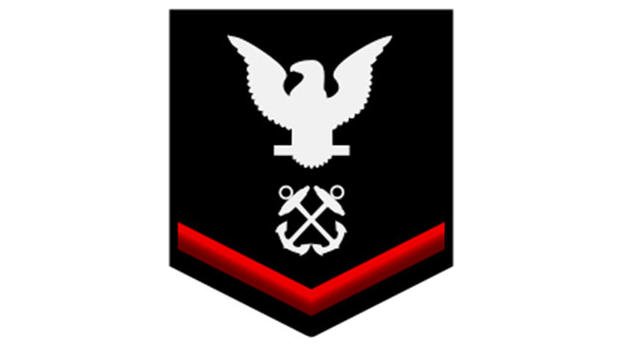
Petty Officer Third Class (E-4)
Promotion to petty officer third class (PO3) is not simply a raise in pay. It is a shift in roles, from one who has been led, to one who must lead. It is an assumption of higher responsibility, authority and accountability. As a petty officer, you not only will be responsible for your subordinates, but you also will be responsible to your subordinates. This means that you will be responsible for subordinates':
- Well-being
- Work performance
- Professional development
- Morale
- Education and training
- Maintaining standards of behavior
When you become a petty officer in the Navy, the expectations of your performance will be higher than you've experienced before.
Moving up in Rate: Unlike advancement to E-2 and E-3, advancement to petty officer is based on your basic eligibility requirements and a Navywide competition. Your basic eligibility for advancement to PO3 is based on the following factors, as well as your performance in the Navywide Advancement-in-Rate Competition:
- Your CO's recommendation
- Two years of time in service (TIS)
- Six months of time in rate (TIR)
- Completion of your rating particular qualifications and nonresident courses
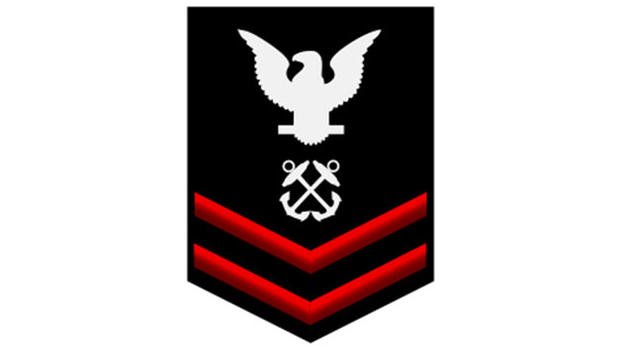
Petty Officer Second Class (E-5)
Promotion to petty officer second class (PO2) is not simply a raise in pay. It means increased expectations in technical expertise and leadership abilities. As a petty officer second class, your level of authority will not change, but you will be expected to manage more resources and larger work groups or watch sections. In addition as a petty officer, you will be responsible for and to your subordinates. This means you will be responsible for your subordinates':
- Well-being
- Work performance
- Professional development
- Morale
- Education and training
- Maintaining standards of behavior
Moving up in Rate: Advancement to petty officer is based on your basic eligibility requirements and a Navywide competition.
Basic Eligibility
Your basic eligibility for advancement to PO2 is based on the following:
- Your CO's recommendation
- Three years of time in service (TIS)
- 12 months of time in rate (TIR)
- Completion of your rating particular qualifications and nonresident courses
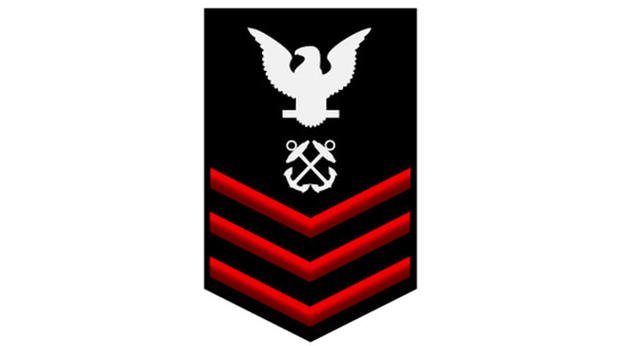
Petty Officer First Class (E-6)
Petty officer first class (PO1) commonly is referred to as the point where the "rubber meets the road;" it marks a transition from junior to senior petty officer. Your promotion to first class also means increased expectations in your technical expertise and leadership abilities, and a time for you to prepare for the next big step in your career, chief petty officer. As a petty officer first class, you may be expected to step up and take charge, to manage a much larger number of resources, including expensive technical equipment, repair shop personnel and large duty sections.
As a petty officer, you will be responsible for and to your subordinates. This means that you will be responsible for your subordinates':
- Well-being
- Work performance
- Professional development
- Morale
- Education and training
- Maintaining standards of behavior
Moving up the Ranks: Your basic eligibility for advancement to PO1 is based on the following requirements and a Navywide competition:
- Your CO's recommendation
- Seven years' time in service (TIS)
- 36 months' time in rate (TIR)
- Completion of your rating particular qualifications and nonresident courses
- Completion of the Navy Leadership Training Continuum (LTC)
Enlisted Navy Rates: Chief Petty Officers (E-7 through E-9)
The following excerpt from the Navy Chief Petty Officer's Creed best captures what it means to advance to chief petty officer (CPO) in the U.S. Navy.
"In the United States Navy -- and only in the United States Navy -- the rank of E7 carries with it unique responsibilities and privileges you are now bound to observe and expected to fulfill. Your entire way of life is now changed. More will be expected of you; more will be demanded of you. Not because you are a E7 but because you are now a Chief Petty Officer. You have not merely been promoted one pay grade, you have joined an exclusive fellowship and, as in all fellowships, you have a special responsibility to your comrades, even as they have a special responsibility to you. This is why we in the United States Navy may maintain with pride our feelings of accomplishment once we have attained the position of Chief Petty Officer."
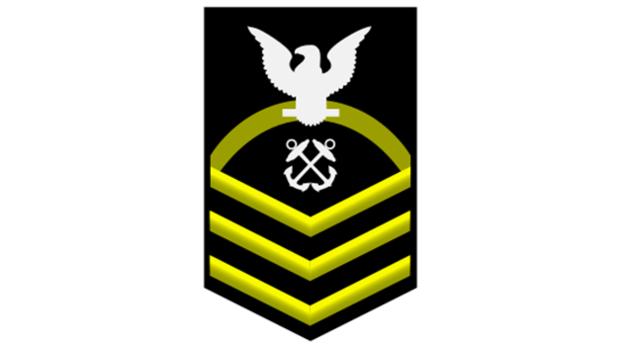
Chief Petty Officer (E-7)
The master chief of the Navy (MCPON) states that chief petty officers are responsible for, have the authority to accomplish and are held accountable for leading sailors and applying their skills to tasks that enable mission accomplishment for the U.S. Navy; developing enlisted and junior officer sailors; communicating the core values, standards and information of our Navy that empower sailors to be successful in all they attempt; and supporting with loyalty the endeavors of the chain of command they serve and their fellow chief petty officers with whom they serve.
Moving up in Rate: Unlike advancement to E-4 through E-6, the chief petty officer advancement process is based on three factors: your basic eligibility requirements, Navywide Final Multiple Score (FMS) and the Chief Petty Officer Promotions Board.
Basic Eligibility
Your basic eligibility for advancement to CPO is based on the following:
- Your CO's recommendation
- 11 years' time in service (TIS)
- 36 months' time in rate (TIR)
- Completion of your rating particular qualifications and nonresident courses
- Completion of the Navy Leadership Training Continuum (LTC) chief indoctrination course
Navywide Competition
Once you have met the basic eligibility requirements for advancement, you will be eligible to participate in the Navywide Advancement-in-Rate Competition.
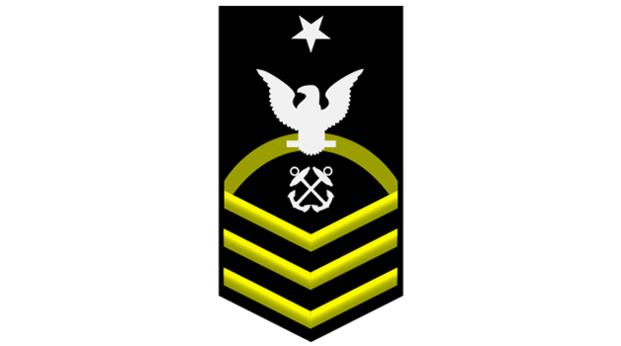
Senior Chief Petty Officer (E-8)
Senior chief petty officers (SCPO) are the senior technical supervisors within a rating or an occupational field. SCPOs have the primary responsibility for supervising and training enlisted personnel oriented to system and subsystem maintenance, repair and operation rather than individual unit work. Based on wide-ranging experience and specialized training, SCPOs provide the command with a higher level of technical and managerial expertise than is expected at the chief petty officer level.
Moving up in Rate: Unlike advancement to chief petty officer, the senior chief advancement process is based solely on the basic eligibility requirements and the Senior Chief Petty Officer Selection Board.
Basic Eligibility
Your basic eligibility for advancement to SCPO is based on the following:
- Your CO's recommendation
- 16 years' time in service (TIS)
- 36 months' time in rate (TIR)
- Completion of the Navy CPO Leadership Training Continuum (LTC)
The Senior Chief Petty Officer Selection Board
If you have met the basic eligibility requirements and are recommended, you will be sent to the Senior Chief Petty Officer Selection Board. The board is charged with considering all eligible candidates for advancement to SCPO.
The board makes its determination, based on the following factors:
- Professional performance at sea
- Education
- Evaluations
- Physical standards
SCPO Advancement Cycles and Notification Dates
| Candidates for Paygrade | Exam or Nomination Date | Selection Board Convenes | Selection Board Results | Advancement Increments/Segments |
|---|---|---|---|---|
| SCPO/MCPO | NOV | MARCH | JUNE | JUL-JUNE |
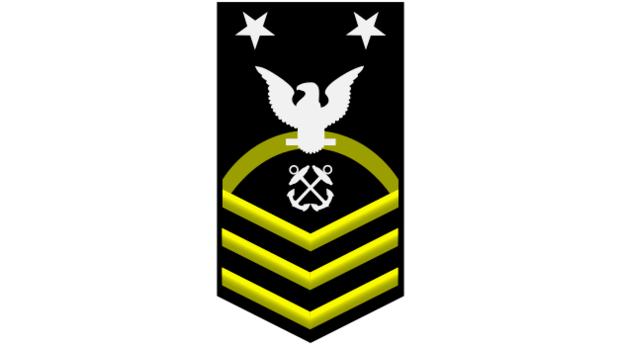
Master Chief Petty Officer (E-9)
Master chief petty officers are the senior enlisted petty officers in the Navy. As such, MCPOs are vested with special command trust and confidence, extending to administrative and managerial functions involving enlisted personnel. Based upon your experience, proven performance and technical knowledge necessary for advancement to the grade of MCPO, you will hold a senior enlisted position within your command. You will help to form and execute policy within your occupational field or across the full Navy spectrum. If you are selected to hold the position of command master chief, you will serve as the senior enlisted adviser in setting command policies about the morale, use and training of all enlisted personnel. As such, you will have direct access to the commanding officer. Additionally, as the command master chief, you will be responsible for carrying out established command policy in specific areas as directed by the commanding officer and the executive officer. As the command master chief, you will take precedence over all enlisted members within your command.
Moving up in Rate: Unlike advancement to chief petty officer, the master chief advancement process is based solely on the basic eligibility requirements and the Master Chief Petty Officer Selection Board.
Basic Eligibility
Your basic eligibility for advancement to MCPO is based on the following:
- Your CO's recommendation
- 19 years' time in service (TIS)
- 36 months' time in rate (TIR)
If you have met the basic eligibility requirements and are recommended, you will be sent to the Master Chief Petty Officer Selection Board. The board is charged with considering all eligible candidates for advancement to MCPO.
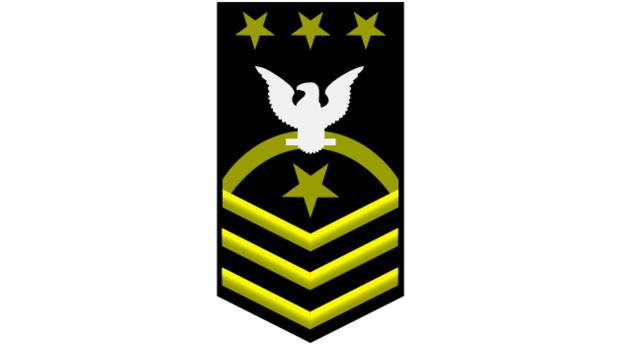
Master Chief Petty Officer of the Navy
The master chief petty officer of the Navy (MCPON) is the most senior enlisted member of the U.S. Navy, equivalent to the sergeant major of the Army, chief master sergeant of the Air Force, sergeant major of the Marine Corps, master chief petty officer of the Coast Guard and senior enlisted adviser to the chairman of the Joint Chiefs of Staff.
He is appointed by the chief of naval operations to serve as a spokesman to address the issues of enlisted personnel to the highest positions in the Navy. As such, he is the senior enlisted adviser to the chief of naval operations as well as the chief of naval personnel. The duties of this position vary depending on the CNO, and the personnel code is N00A as the senior enlisted adviser to chief of naval operations and PERS-00D in a special advisory capacity to chief of naval personnel/deputy chief of naval operations (manpower, personnel and training).
Want to Know More About the Navy?
Be sure to get the latest news about the Navy, as well as critical info about how to join the Navy and all the benefits of service -- become a Military.com member for free and receive customized updates delivered straight to your inbox.
Interested in Joining the Military?
Learn about the benefits of serving your country, paying for school, military career paths, and more: sign up now and hear from a recruiter near you.
